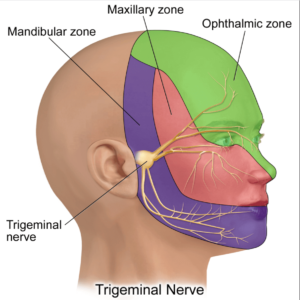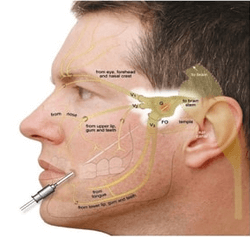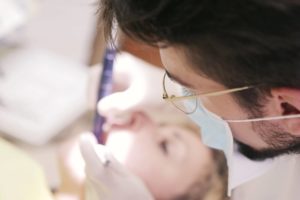Trigeminal Neuralgia – Symptoms, Causes and Treatments
Humans are very sensitive to any type of stimulus. The major stimulus which every human body reacts to is pain. Pain felt in any part of the body causes a feeling of discomfort and agony.
One of the most sensitive parts of the human body is the face. Pain in the limbs is quite common and has been experienced by all of us at least once in our lives. But a sharp pain in the face can be really irritating and can make you uncomfortable.
We will now learn about the pain which is also described as the most excruciating pain known to humanity.
WHAT IS TRIGEMINAL NEURALGIA?

It is also known as tic douloureux. It is a pain felt in the face and jaw, and sometimes also affects the area above the eye and around the nose. This pain is said to occur at any age.
It is an intense, searing, electric shock-like pain felt in the jaw and lower or upper portion of the face. It is caused by irritation or damage to the trigeminal nerve. This nerve is one of the most widely distributed nerves in the head, which branches to the forehead, cheek and lower jaw.
There are two trigeminal nerves for each side of the face, but trigeminal neuralgia occurs mostly on one side only.
This pain can sometimes be so severe that it makes an affected person unable to eat or drink. It spreads throughout the face in a matter of a few seconds, but as it grows, it can for minutes.
The trigeminal nerve has three branches, on the basis of which, the area of pain may vary. These branches are:
- Ophthalmic nerve (V1): It affects the forehead, nose and eyes
- Maxillary nerve (V2): It affects the lower areas like the nose, cheek, gums, lip and upper teeth
- Mandibular nerve (V3): It affects the jaw, lower teeth and lips
SYMPTOMS OF TRIGEMINAL NEURALGIA
The following can be the symptoms of trigeminal neuralgia:
- The major symptom is a sudden attack of sharp and excruciating pain which lasts from a few seconds to a few minutes
- Tingling or numbness in the face before the pain grows
- Pain in one side of the face or, rarely, both sides
- Pain focused in one spot which may spread in a wider area
- Bolts of pain which occur more often over time
- Repeated occurrence of sharp, stabbing pain which feels like an electric shock
- Irregular pangs of mild pain ranging from few seconds to several minutes
- Pain in all branches of the trigeminal nerve, including eyes, jaws, teeth, gums, cheeks and around the nose
- Sudden episodes of pain are triggered by stimuli that are usually not painful, such as brushing or touching the cheek
- Occurrences of cluster attacks, which may last longer, but there may be no pain between them
- Tremors which last from few seconds to a few minutes
CAUSES OF TRIGEMINAL NEURALGIA
There are two types of trigeminal neuralgia: Primary trigeminal neuralgia and Secondary trigeminal neuralgia.
-PRIMARY TRIGEMINAL NEURALGIA
This condition arises when the trigeminal nerve and its function is disrupted. Usually, the problem arises due to contact between a normal blood vessel (arteries and veins) and the trigeminal nerve at the base of the brain, which causes pressure on the nerve as it enters the brain and causes it to malfunction.
It can occur when the myelin sheath (the protective outer layer of a nerve) wears away due to pressure on the nerve, cause stabbing pain.
-SECONDARY TRIGEMINAL NEURALGIA
In some cases, it can be caused due to the pressure on the nerve from certain medical conditions such as:
- Multiple Sclerosis (MS), which is a condition that affects the nervous system
- Tumours
- Cysts
- Facial injuries
- Damage caused during surgeries, such as dental surgeries
- An abnormal tangle of arteries and veins, known as arteriovenous malformation
There may be certain stimuli that act as triggers for trigeminal neuralgia pain. Some examples of such stimuli are:
- Light touch
- Washing face
- Swallowing
- Chewing
- Smiling
- Talking
- Head movement
- Cool breeze
- Vibrations
- Shaving
- Applying makeup
- Brushing teeth
DIAGNOSIS OF TRIGEMINAL NEURALGIA
The description of the pain helps the doctor decide the diagnosis of trigeminal neuralgia. These include:
- TRIGGERS are stimuli that give rise to the stabbing pain of trigeminal neuralgia
- LOCATION of the parts of the face which are affected
- TYPE of pain is sudden, stabbing and electric shock-like
A few physical tests conducted to diagnose trigeminal neuralgia are as follows:
- MAGNETIC RESONANCE IMAGING (MRI) uses magnetic fields to create detailed images of the body. The doctor may recommend an MRI scan of the head to check for a tumour or multiple sclerosis, which may cause trigeminal neuralgia.
- MAGNETIC RESONANCE ANGIOGRAM where a doctor may inject a dye into the blood vessels to view the arteries, veins and blood flow, may be done.
- A NEUROLOGICAL EXAMINATION may be conducted by the doctor to determine the exact location and branch of the trigeminal nerve affected.
Reflex tests can also be used to determine the symptoms.
TREATMENTS OF TRIGEMINAL NEURALGIA
The treatment of trigeminal neuralgia starts from medication. However, if the patient stops responding to the medications, the doctor may have to suggest injections or non-surgical, minimally invasive, keyhole treatments or surgery.
~MEDICINES
The doctor generally prescribes medicines to block pain signals sent to the brain. These medications may include:
- Anticonvulsants If the prescribed anticonvulsants start to lose effect, the doctor may increase the dose or switch types. It can have side effects such as dizziness, drowsiness and nausea.
- Antispasmodic agents or muscle relaxants may be used alone or alongside anticonvulsants to reduce pain. It can have side effects such as confusion and nausea.
~INJECTIONS

Some injections may be used to reduce pain when medicines are no longer in use.
~NONSURGICAL, MINIMALLY – INVASIVE, KEYHOLE TREATMENTS
The doctor selectively destroys the pain nerve fibres to reduce pain, which may lead to facial numbness.
It may include:
- Glycerol technique – Sterile glycerol is deposited around the origin of pain nerve fibres in the brain, which is a sac of spinal fluid around the trigeminal nerve, using a special technique.
- Radiofrequency thermal lesioning is a procedure to selectively destroy pain nerve fibres associated with pain in the face.
Waking the patient up from sleep, the doctor uses an electrode to send a mild electric current through its tip. After locating the area of pain, the electrode is heated to destroy nerves in the area to create an area of injury and relieve pain.
It may cause facial numbness rarely.
- Balloon compression is the procedure where a hollow needle is inserted into the face and guided to a part of the trigeminal nerve going through the brain. Then a wire with a balloon on the end is inserted and the balloon is inflated with enough pressure to damage the trigeminal nerve.
This successfully reduces pain but also causes facial numbness in some patients.
~SURGERY
The surgical treatment includes:
- Brain stereotactic radiosurgery (Gamma knife) in which a surgeon guides a fixed dosage of radiation to the root of the trigeminal nerve. Radiation is used to damage the trigeminal nerve and reduce pain. Relief is gradual and may take up to a month. It may affect other normal nerves also. Face numbness can be a side effect.
- Microvascular decompression includes the removal or relocation of any blood vessels which are in contact with the trigeminal nerve to stop the malfunctioning of the nerve. The doctor may also have to remove a part of the trigeminal nerve.
In this procedure, the doctor makes an incision on the side of the ear on the affected side and then through a hole in the skull, removes the blood vessels in contact with the trigeminal nerve. He then places a soft cushion between them.
Also, some risks are, associated with this procedure are:
- Decreased hearing
- Stroke
- Chewing muscles weakness
- Facial numbness
~RHIZOTOMY
The doctor destroys the nerve fibres to reduce pain, which may lead to facial numbness.
It may include:
- Glycerol injection full of sterile glycerol is injected into the trigeminal cistern, which is a sac of spinal fluid around the trigeminal nerve, using an injection.
- Radiofrequency thermal lesioning is a procedure to selectively destroy nerve fibres associated with pain in the affected area.
Waking the patient up from sedation, the doctor uses the electrode to send a mild electric current through its tip and asks about the location where tingling is felt. After locating the area of pain, the patient is sedated again and the electrode is heated to destroy nerves in the area to create an area of injury and relieve pain. It may cause facial numbness.
- Balloon compression is the procedure where a hollow needle is inserted into the face and guided to a part of the trigeminal nerve going through the base of the skull. Then a catheter with a balloon on the end is inserted and the balloon is inflated with enough pressure to damage the trigeminal nerve. This successfully reduces pain but also causes facial numbness in the majority of the patients.
PREVENTION OF TRIGEMINAL NEURALGIA
There are no certified solutions or preventions of trigeminal neuralgia. However, there are a few preventive measures that can help in keeping the attacks away after being diagnosed. These measures can be taken to manage the symptoms. These include:
- Avoid stimuli that act as triggers
- If brushing acts as a trigger, use lukewarm water to rinse the mouth
- Use a cotton pad to wash the face
- Avoid eating too hot or chilled food
- Eat soft food
- Wash face using lukewarm water
CONCLUSION
Trigeminal neuralgia being named as the most excruciating pain known to humanity is proof enough of the severity of this ailment. Make sure to not ignore any symptoms and reach out for help to prevent them from becoming worse.
Visit the Best Doctor for Trigeminal Neuralgia or any other such problems in Delhi, Dr G N Goyal, at the nearest Pain and Spine Clinic, for all kinds of chronic pain, and book your appointment now!
CONTACT US
You may please click on the following link, to know the pleasant experiences of our patients.
https://www.youtube.com/watch?v=yrWiT9xLMH0
https://www.youtube.com/watch?v=xJ3fbaevalA
REFERENCES


